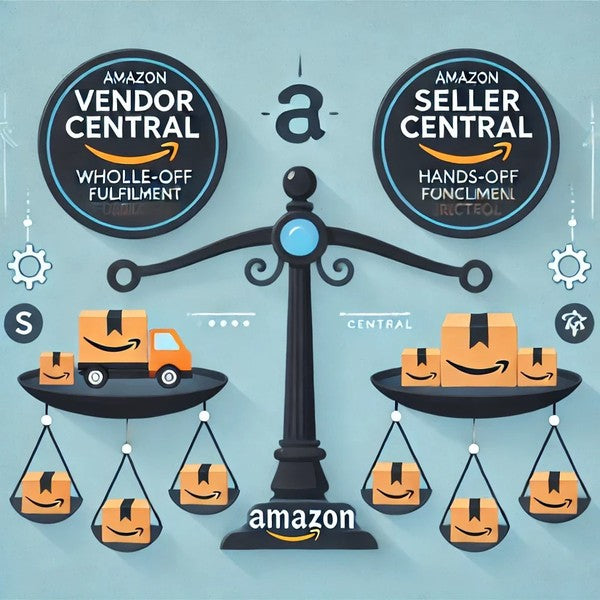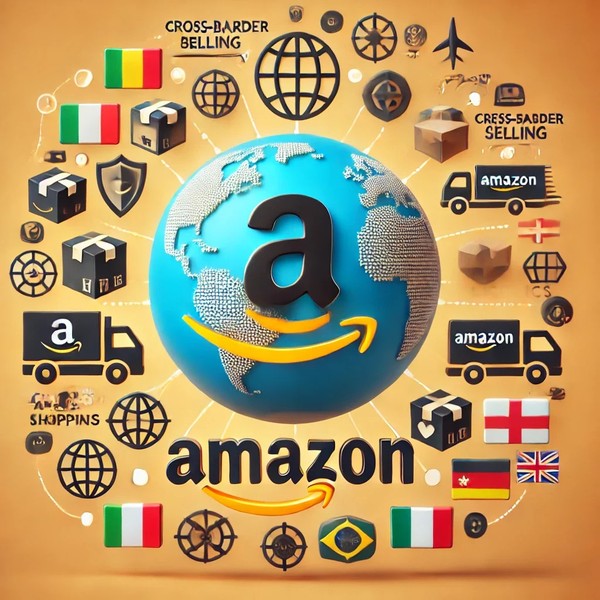, company.com
The Ultimate Guide to Optimizing Your Amazon Product Listings

The Ultimate Guide to Optimizing Your Amazon Product Listings

Optimizing your Amazon product listings is essential for driving traffic, increasing conversions, and ultimately boosting sales. With over 15 years of experience selling on Amazon, I’ve learned that a well-optimized listing can significantly impact your success on the platform.
In this guide, I’ll share my insights and proven strategies to help you optimize your Amazon product listings effectively.
Why Optimization Matters
A well-optimized product listing not only improves your visibility in Amazon's search results but also enhances the overall shopping experience for potential buyers. It helps you stand out in a crowded marketplace and ensures that your product information is clear, accurate, and compelling.
Key Elements of an Optimized Amazon Listing
-
Product Title
-
Your product title is one of the first things shoppers see, so it needs to be clear and informative.
-
Include your main keywords naturally.
-
Highlight key features such as brand, size, color, and quantity.
-
Keep it within Amazon’s character limit (usually 200 characters).
Example:
"Stainless Steel Garlic Press - Heavy Duty, Ergonomic Handle, Dishwasher Safe, Perfect for Garlic Lovers"


2. Bullet Points
-
Use bullet points to clearly outline the main features and benefits of your product.
-
Focus on what sets your product apart from the competition.
-
Keep each bullet point concise and to the point, ideally under 200 characters.
-
Include relevant keywords naturally.
Example:
-
Ergonomic Design:Comfortable handle for easy pressing.
-
High-Quality Material:Made from durable stainless steel.
-
Easy to Clean:Dishwasher safe for hassle-free cleaning.
-
Versatile Use: Ideal forgarlic, ginger, and more.

3. Product Description
-
The product description is your opportunity to tell a compelling story about your product.
-
Expand on the features and benefits mentioned in the bullet points.
-
Use HTML formatting (bold, italics, line breaks)to make the text more readable.
-
Include additional keywords, but avoid keyword stuffing.
Example:
"Discover the ultimate kitchen companion with our Stainless Steel Garlic Press. Designed with comfort and durability in mind, this garlic press features an ergonomic handle that makes pressing garlic a breeze. Crafted from high-quality stainless steel, it's built to last and is dishwasher safe for easy cleaning. Whether you're a professional chef or a home cook, this versatile tool is perfect for pressing garlic, ginger, and more. Plus, with our 30-day money-back guarantee, you can shop with confidence knowing your satisfaction is our top priority."


4. Product Images
-
High-quality images are crucial for showcasing your product and attracting buyers.
-
Use multiple images to show your product from different angles and in various uses.
-
Include lifestyle images to help customers visualize the product in their daily lives.
-
Ensure images meet Amazon’s technical requirements (minimum 1000 pixels on the longest side).

5. Backend Search Terms
-
Amazon allows you to include additional keywords in the backend search terms fields.
-
Use this space to add relevant keywords that didn’t fit naturally into your title, bullet points, or description.
-
Avoid repetition and unnecessary punctuation.

Best Practices for Optimization
-
Customer Reviews and Questions: Regularly review customer feedback to identify common questions and concerns. Use this information to update your listing and address any issues.
-
Competitor Analysis: Study the top competitors in your category to understand what they’re doing well. Look for opportunities to differentiate your product.
-
Continuous Testing: Regularly A/B test different elements of your listing, such as titles, bullet points, and images, to see what resonates best with your audience.
Common Mistakes to Avoid
-
Keyword Stuffing: While keywords are important, overloading your listing with keywords can make it difficult to read and may harm your rankings.
-
Poor Quality Images: Low-resolution or unprofessional images can deter potential buyers. Invest in high-quality images that showcase your product effectively.
-
Ignoring Backend Search Terms: Failing to utilize the backend search terms is a missed opportunity to improve your visibility in search results.
Real-Life Example
I once had a listing for a kitchen gadget that wasn’t performing well. After analyzing customer feedback, I realized that the product images didn’t clearly show how to use the gadget. I updated the images to include step-by-step usage instructions and added a detailed product description highlighting its benefits. The changes led to a significant increase in conversions and positive reviews.
Conclusion
Optimizing your Amazon product listings is a continuous process that requires attention to detail and a deep understanding of your target audience. By focusing on key elements like product titles, bullet points, descriptions, images, and backend search terms, you can create compelling listings that attract and convert shoppers. Keep testing and refining your approach to stay ahead in the competitive Amazon marketplace.
For more tips on effective keyword research, check out The Complete Guide to Amazon Keyword Research for Beginners. Additionally, to leverage enhanced content for better sales, see How to Leverage Amazon A+ Content for Higher Sales
Related articles
Amazon Vendor Central vs. Seller Central: Which is Right for You? Deciding between Amazon Vendor Central and Seller Central is a crucial step for your Amazon business strategy. Each platform has its own set of benefits and challenges. With over 15 years of experience selling on Amazon, I’ve had the opportunity to work with both. In this guide, I’ll break down the key differences between Vendor Central and Seller Central to help you decide which is the best fit for your business. 1. Understanding Vendor Central Amazon Vendor Central is an invite-only platform where you sell your products directly to Amazon, who then sells them to customers. Pros: Wholesale Model: You sell your products in bulk to Amazon, which can lead to large purchase orders and immediate cash flow. Marketing Support: Vendors often receive marketing support and promotions from Amazon. Hands-Off Fulfillment: Amazon handles all aspects of fulfillment, including shipping and customer service. Cons: Less Control: Limited control over pricing, inventory, and branding. Margin Pressure: Amazon negotiates wholesale prices, which can be lower than what you might achieve through Seller Central. 2. Understanding Seller Central Amazon Seller Central allows you to sell directly to consumers on the Amazon marketplace, either using Fulfillment by Amazon (FBA) or fulfilling orders yourself. Pros: Greater Control: You have full control over pricing, inventory, and branding. Higher Margins: Potential for higher margins as you set your own prices. Flexibility: More flexibility in managing your sales strategies and product listings. Cons: More Responsibilities: You handle inventory management, pricing strategies, and customer service. Fulfillment Challenges: If you’re not using FBA, you must manage shipping and returns. 3. Key Differences to Consider: Pricing Control: Seller Central gives you more control over pricing, allowing you to adjust based on market conditions. Vendor Central’s wholesale model means Amazon sets the retail price. Branding: Seller Central offers more opportunities for branding through enhanced content and custom storefronts. Vendor Central has limited branding options. Fulfillment: Vendor Central handles all fulfillment and customer service, making it a hands-off process for vendors. Seller Central requires you to manage these aspects unless you use FBA. 4. Which Platform is Right for You? The decision between Vendor Central and Seller Central depends on your business goals and resources. Vendor Central is Ideal for: Businesses with high-volume, low-margin products. Those seeking a hands-off approach to fulfillment and customer service. Brands looking for immediate large purchase orders and cash flow. Seller Central is Ideal for: More Responsibilities: You handle inventory management, pricing strategies, and customer service. Fulfillment Challenges: If you’re not using FBA, you must manage shipping and returns. Personal Experience and Advice When I first started, I used Seller Central because it gave me the control I needed to build my brand. However, as my business grew, I saw the benefits of Vendor Central for larger volume sales. My advice? Start with Seller Central to establish your brand and understand the marketplace dynamics. Once you’re ready for larger orders and want to offload fulfillment responsibilities, consider Vendor Central. Conclusion Choosing between Amazon Vendor Central and Seller Central depends on your business goals, resources, and the level of control you want over your products. Both platforms offer unique benefits that can help you grow your Amazon business. By understanding the key differences and evaluating your specific needs, you can make an informed decision that aligns with your business strategy
Read moreCross-Border Selling on Amazon: A Comprehensive Guide
| 05 Jul 2024Cross-Border Selling on Amazon: A Comprehensive Guide Expanding your business internationally through Amazon's cross-border selling program can open up a world of opportunities. However, it also comes with its own set of challenges. With over 15 years of experience navigating the complexities of Amazon’s marketplace, I’ve learned the ins and outs of selling across borders. Let’s dive into the strategies and best practices for successful cross-border selling on Amazon. 1. Understanding Market Demand Before diving into cross-border selling, it’s crucial to understand the demand in your target markets. Market Research: Use tools like Jungle Scout and Helium 10 to assess market demand and competition in different countries. Analyze search trends and customer preferences. Local Trends: Keep an eye on local trends and seasonal variations that may affect demand. This will help you stock the right products at the right time. 2. Compliance and Regulations Each country has its own set of regulations and compliance requirements. Understanding these is key to avoiding legal issues and ensuring smooth operations. Customs and Duties: Research the customs regulations and duties for each country you plan to sell in. Factor these costs into your pricing strategy. Product Compliance: Ensure your products meet the safety and compliance standards of the target market. This may include certifications, labeling requirements, and safety standards. 3. Fulfillment Options Choosing the right fulfillment option is crucial for efficient cross-border selling. Fulfillment by Amazon (FBA): FBA is a popular choice for cross-border sellers due to its extensive logistics network and customer service. Amazon handles storage, packaging, and shipping, which simplifies the process. Third-Party Logistics (3PL): If FBA is not a viable option, consider partnering with a reliable third-party logistics provider that specializes in international shipping. 4. Pricing Strategy Setting the right price for your products in international markets can be challenging. Currency Fluctuations: Monitor currency exchange rates and adjust your prices accordingly to maintain profitability. Competitive Pricing: Research the pricing of similar products in your target market and adjust your prices to stay competitive while covering additional costs like shipping and customs duties. 5. Marketing and Localization Adapting your marketing strategy to fit the local culture and language can significantly impact your success. Localization: Translate your product listings, marketing materials, and customer service communications into the local language. Consider cultural nuances to ensure your message resonates with local customers. Advertising: Utilize Amazon’s advertising tools to target customers in your chosen markets. Sponsored Products and Sponsored Brands can help increase visibility and drive sales. Personal Experience and Advice When I first ventured into cross-border selling, I underestimated the importance of localization. Adapting my listings and marketing strategy to fit the local culture and language made a significant difference in my sales. My advice? Invest time and resources into understanding and adapting to each market you enter. Conclusion Cross-border selling on Amazon offers immense growth potential, but it requires careful planning and execution. By understanding market demand, complying with local regulations, choosing the right fulfillment option, setting a competitive pricing strategy, and localizing your marketing efforts, you can successfully expand your business internationally. A Word of Advice Remember, patience and persistence are key to successful cross-border selling. Stay informed about market trends, continuously optimize your strategy, and be prepared to adapt to new challenges. And don’t forget to enjoy the journey—exploring new markets can be an exciting adventure
Read more

